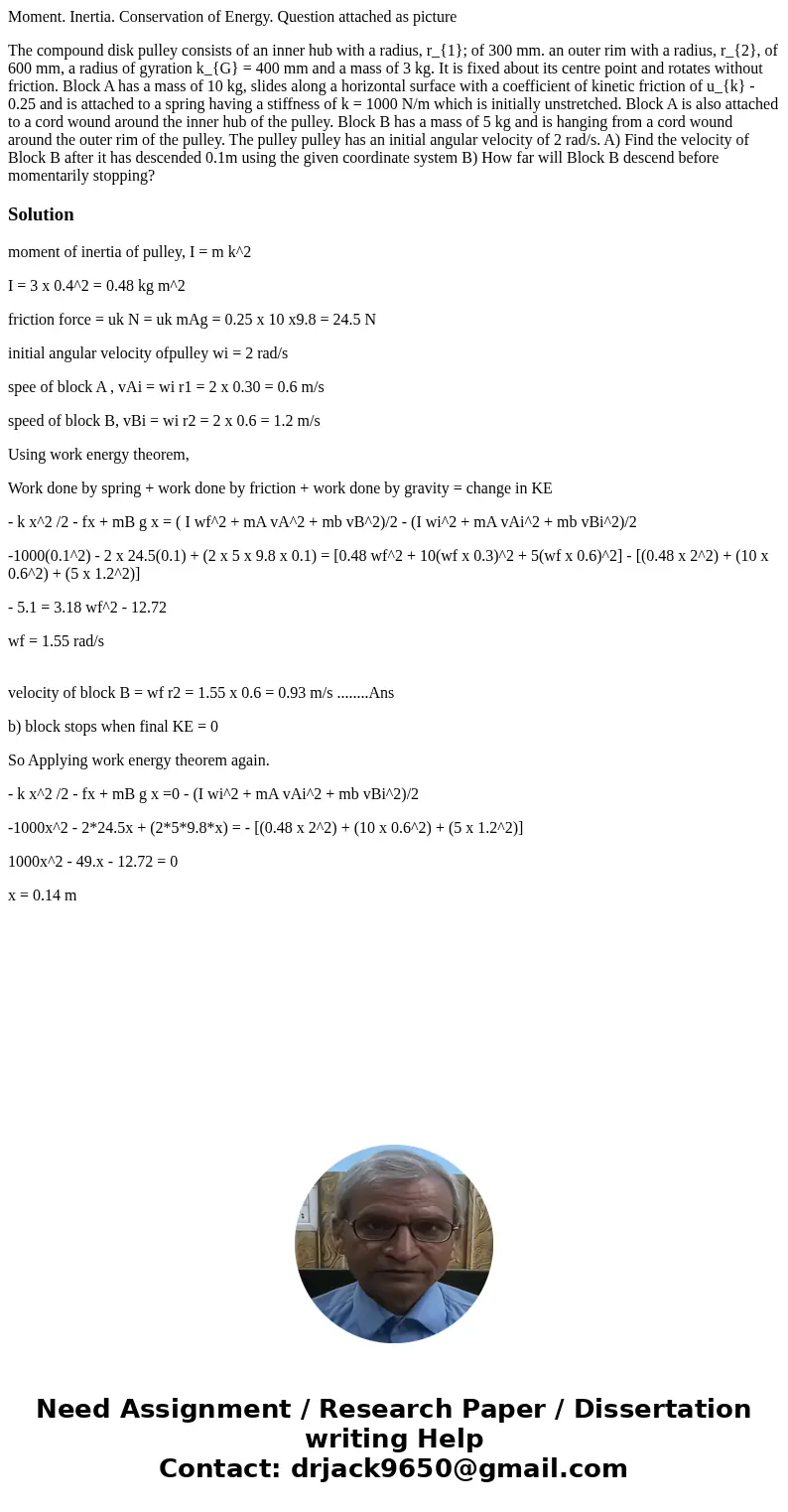Moment Inertia Conservation of Energy Question attached as p
Moment. Inertia. Conservation of Energy. Question attached as picture
The compound disk pulley consists of an inner hub with a radius, r_{1}; of 300 mm. an outer rim with a radius, r_{2}, of 600 mm, a radius of gyration k_{G} = 400 mm and a mass of 3 kg. It is fixed about its centre point and rotates without friction. Block A has a mass of 10 kg, slides along a horizontal surface with a coefficient of kinetic friction of u_{k} - 0.25 and is attached to a spring having a stiffness of k = 1000 N/m which is initially unstretched. Block A is also attached to a cord wound around the inner hub of the pulley. Block B has a mass of 5 kg and is hanging from a cord wound around the outer rim of the pulley. The pulley pulley has an initial angular velocity of 2 rad/s. A) Find the velocity of Block B after it has descended 0.1m using the given coordinate system B) How far will Block B descend before momentarily stopping?Solution
moment of inertia of pulley, I = m k^2
I = 3 x 0.4^2 = 0.48 kg m^2
friction force = uk N = uk mAg = 0.25 x 10 x9.8 = 24.5 N
initial angular velocity ofpulley wi = 2 rad/s
spee of block A , vAi = wi r1 = 2 x 0.30 = 0.6 m/s
speed of block B, vBi = wi r2 = 2 x 0.6 = 1.2 m/s
Using work energy theorem,
Work done by spring + work done by friction + work done by gravity = change in KE
- k x^2 /2 - fx + mB g x = ( I wf^2 + mA vA^2 + mb vB^2)/2 - (I wi^2 + mA vAi^2 + mb vBi^2)/2
-1000(0.1^2) - 2 x 24.5(0.1) + (2 x 5 x 9.8 x 0.1) = [0.48 wf^2 + 10(wf x 0.3)^2 + 5(wf x 0.6)^2] - [(0.48 x 2^2) + (10 x 0.6^2) + (5 x 1.2^2)]
- 5.1 = 3.18 wf^2 - 12.72
wf = 1.55 rad/s
velocity of block B = wf r2 = 1.55 x 0.6 = 0.93 m/s ........Ans
b) block stops when final KE = 0
So Applying work energy theorem again.
- k x^2 /2 - fx + mB g x =0 - (I wi^2 + mA vAi^2 + mb vBi^2)/2
-1000x^2 - 2*24.5x + (2*5*9.8*x) = - [(0.48 x 2^2) + (10 x 0.6^2) + (5 x 1.2^2)]
1000x^2 - 49.x - 12.72 = 0
x = 0.14 m

 Homework Sourse
Homework Sourse